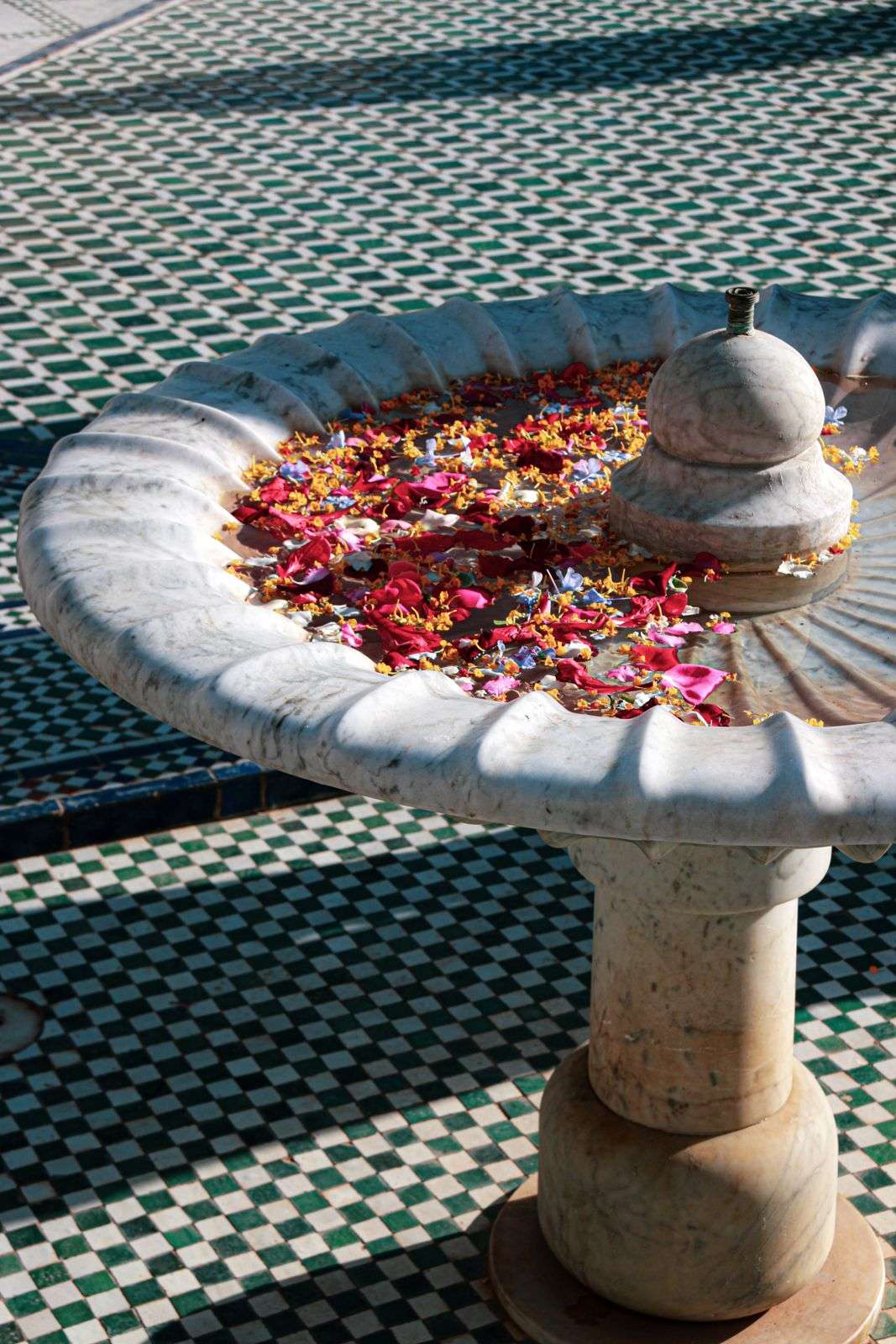Embark on a Culinary Journey: Exploring the Best Moroccan Food
Moroccan cuisine, a vibrant tapestry woven with aromatic spices and centuries-old traditions, invites food enthusiasts on an unforgettable gastronomic adventure. From the iconic tagine to the communal couscous, every dish tells a story of Morocco’s rich cultural heritage.
Tagine: The Quintessential Moroccan Experience
At the heart of Moroccan culinary artistry is the tagine. This savory stew, named after the earthenware pot it’s cooked in, symbolizes the essence of Moroccan flavors. Whether it’s chicken, lamb, or vegetables, each tagine is slow-cooked to perfection, blending spices and ingredients into a rich, flavorful concoction that captivates the palate.
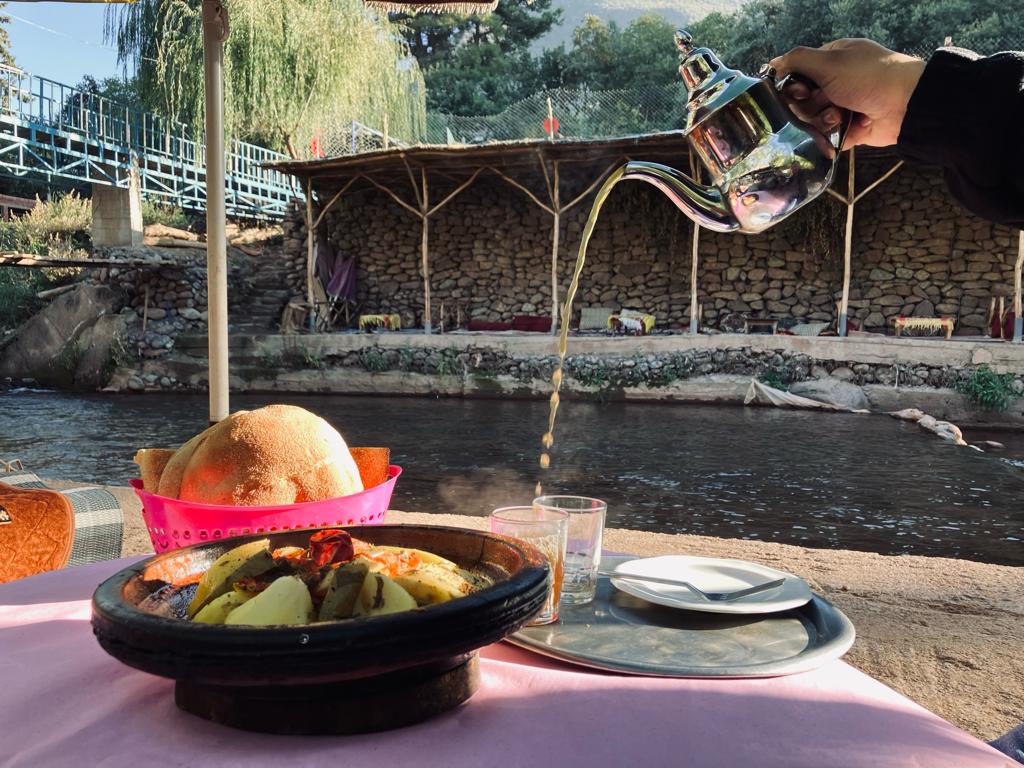
The tagine has its roots in North African cuisine, particularly in Morocco. The word “tagine” not only refers to the dish itself but also to the conical earthenware pot with a distinctive domed lid in which it is cooked. This ancient cooking vessel has been used for generations, with its design proving to be essential for slow-cooking savory stews, infusing them with unparalleled depth and richness.
The tagine’s unique design plays a crucial role in the cooking process. The cone-shaped lid allows steam to rise, condense, and drip back onto the simmering ingredients, ensuring they remain tender and infused with flavor. The bottom of the pot, wider and shallow, enables the even distribution of heat, while the conical shape helps in the retention of moisture. This combination results in a dish that is both succulent and aromatic.
Rfissa – A Culinary Gem
Rfissa, a Moroccan dish with Berber origins, is a culinary gem that marries tradition with taste. This hearty and aromatic dish is a celebration of simplicity and sophistication, featuring a harmonious blend of flavors. The star of rfissa is typically shredded chicken, slow-cooked to perfection with lentils, fenugreek seeds, and a medley of aromatic spices.
What sets rfissa apart is the use of msemmen, a traditional Moroccan flatbread, that is crumbled into the stew, absorbing its rich flavors and creating a unique texture. This delightful dish is often reserved for special occasions and family gatherings, embodying the warmth and generosity of Moroccan hospitality.
Couscous – The Soul of Moroccan Gatherings
Couscous, a staple of North African cuisine, is a versatile grain that has found its way into kitchens worldwide. Originating from the Berber region, this tiny pasta-like grain is made from crushed and steamed wheat, creating a light, fluffy texture that serves as the perfect canvas for an array of flavors.
Traditionally served in a communal fashion, couscous embodies the communal spirit of North African dining. Its presence at festive occasions and family gatherings makes it more than just a meal; it’s a cultural experience that brings people together.
Beyond its cultural significance, couscous is celebrated for its nutritional benefits. Rich in carbohydrates and a good source of protein, couscous is a healthy foundation for a well-balanced meal.
Savoring the Sweet Life: Moroccan Delicacies
Traditional bread Khobz, a ubiquitous sight, is expertly crafted and sold everywhere. From bustling medinas to serene coastal towns, the aroma of freshly baked bread wafts through the air. When in the desert, witness the magic of sand bread. Baked under hot Sahara sand, this thin, round bread is a unique culinary experience. Fill it with savory ingredients, and it transforms into Berber pizza, a popular and satisfying snack enjoyed by everyone.

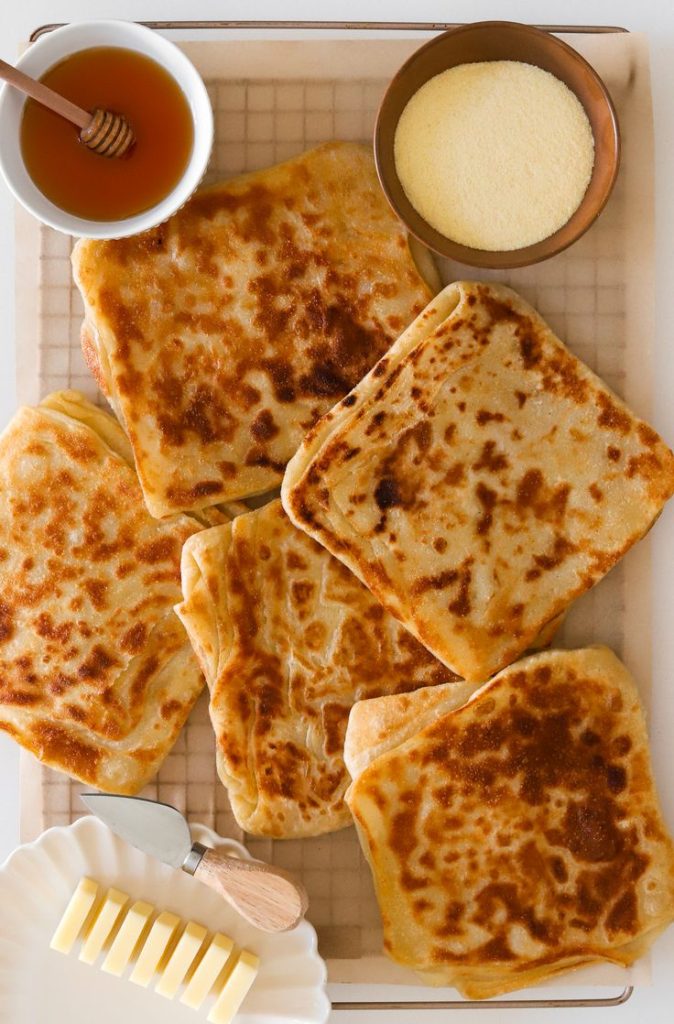
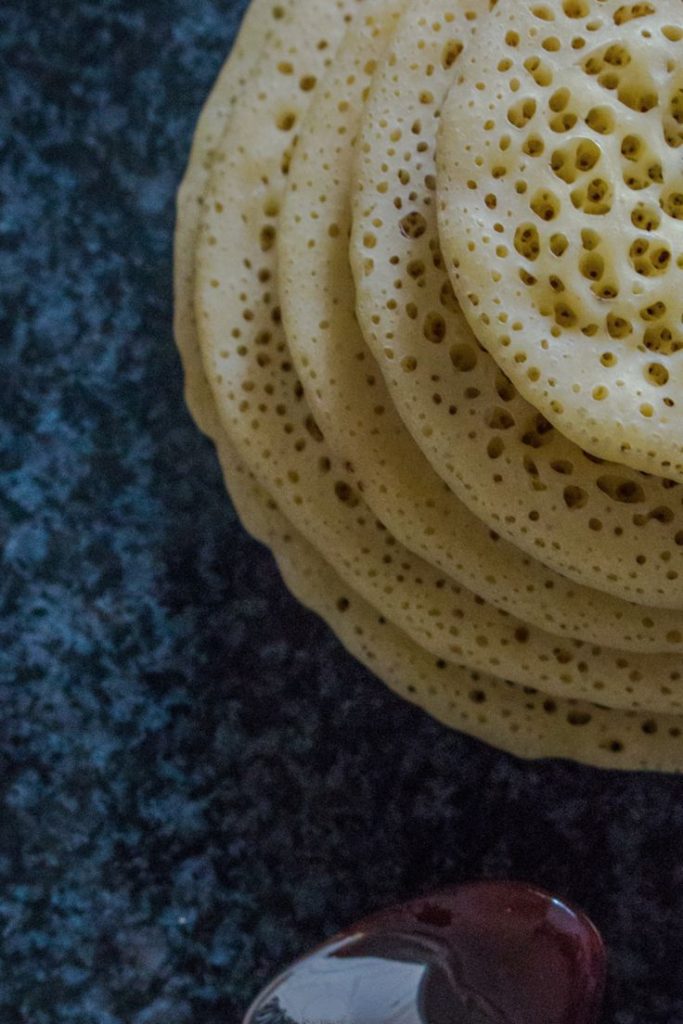
Msemmen, the delicate and flaky pan-fried dough, adds a crispy texture to breakfast tables. Pair it with honey or jam for an authentic Moroccan start to the day. Try it with amlou (traditional spread made from almonds, argan oil, and honey), cheese or chocolate too.
Indulge your sweet tooth with the exquisite beghrir, or “thousand-hole pancake,” a spongy delight which Moroccans are most likely to enjoy dipped in a syrup made from butter and honey.
Sahrawi Traditions
As you traverse the Saharan landscapes, don’t miss the Sahrawi tradition of brewing aromatic tea, a blend of green tea leaves, and a touch of sugar. Lot of sugar! Sipped ceremoniously, this tea mirrors the hospitality ingrained in Sahrawi culture.
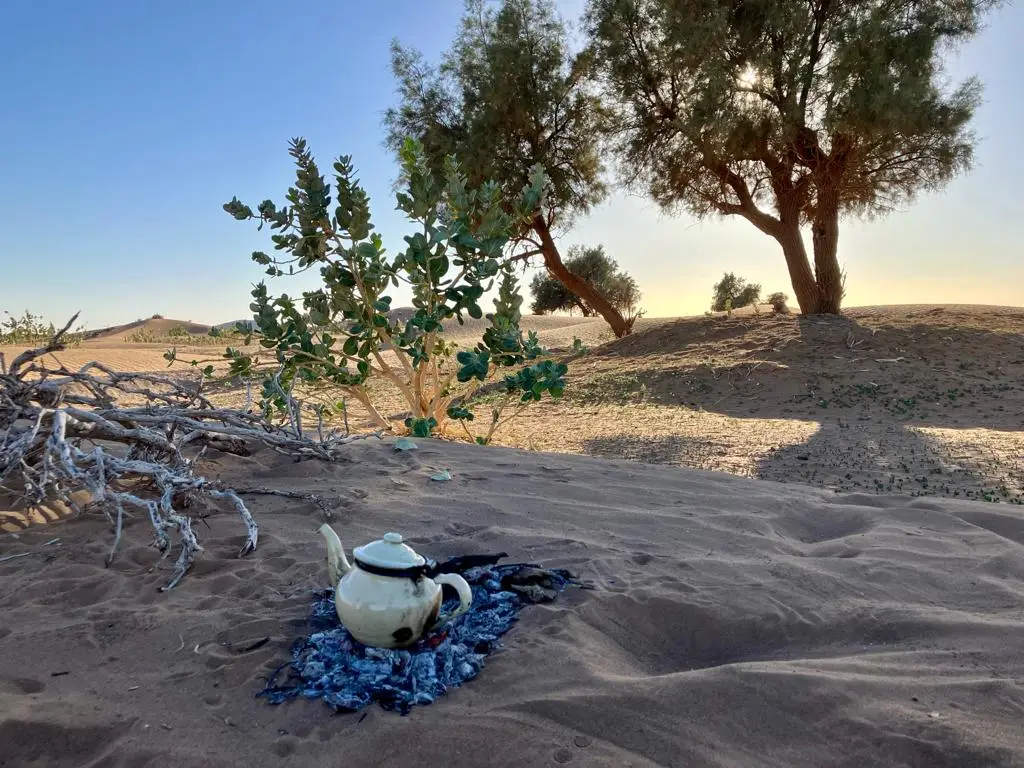
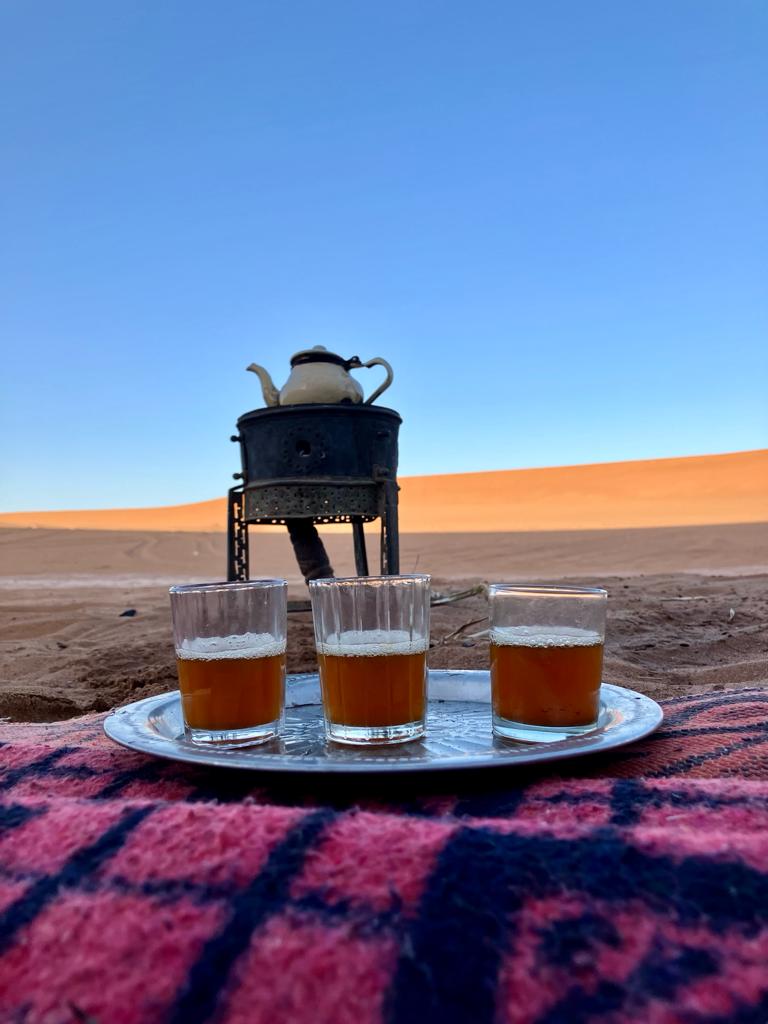
Sea and Land Delights
Venture into more exotic territories with camel meat, a delicacy cherished for its lean and tender qualities. Along the coastal cities, relish the freshest catches in dishes featuring a medley of fish and seafood. From grilled sardines and crabs in Essaouira to seafood tagines in Casablanca, the coastal culinary offerings are also a testament to Morocco’s diverse geography.

Delve into the traditional charm of Tanjia, a slow-cooked stew synonymous with Marrakech. Prepared in a special clay pot and slow-cooked in a communal oven, Tanjia offers tender and flavorful meat, making it a quintessential dish for family gatherings and special occasions.
Liquid Gold – Argan Oil
As you explore the markets and orchards, encounter the liquid gold of Morocco – argan oil. This versatile oil, extracted from the argan tree, not only enriches the cuisine but also plays a prominent role in skincare. The argan tree (Argania spinosa) originates from Morocco and predominantly thrives in the southwestern region of the country. UNESCO designates the argan forests in Morocco as a Biosphere Reserve, underscoring the ecological imperative to conserve this distinctive and invaluable tree species.
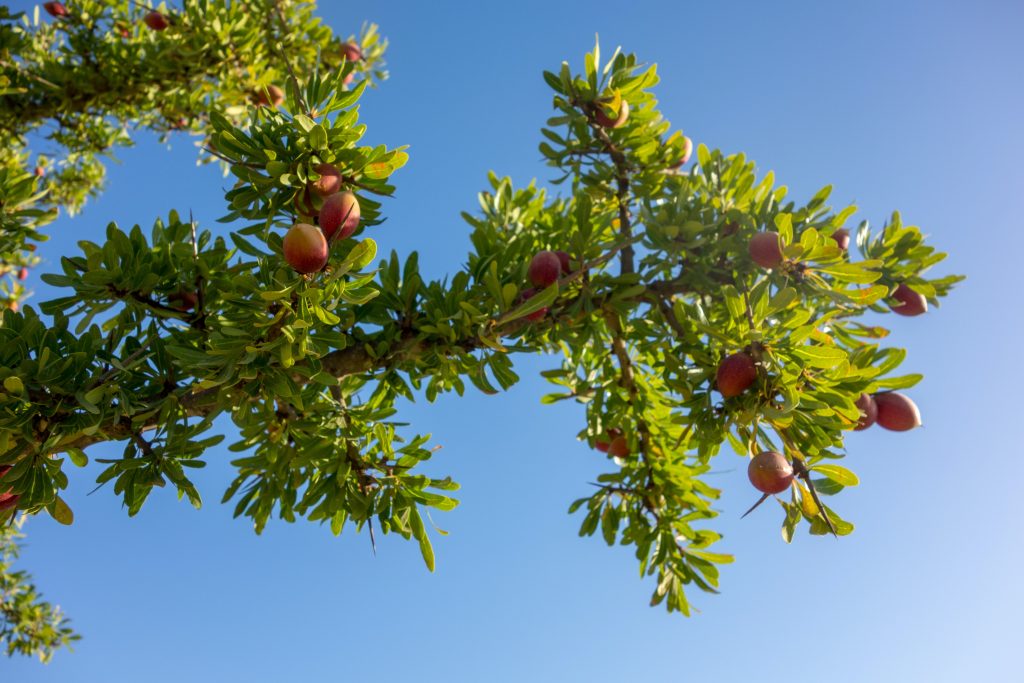
Orchard Treasures – Olives, Citrus Fruits, and Nuts
Olives, a cornerstone of Moroccan agriculture, find their way into a multitude of dishes, from zesty salads to savory tagines. The variety of olives reflects the diverse landscapes of the country.
Citrus fruits, such as oranges, infuse a burst of freshness into Moroccan cuisine. From refreshing salads to tantalizing desserts, the sweet and tangy flavor of oranges is omnipresent. Street corners adorned with vibrant stalls offer a rainbow of fruit juices, from zesty citrus blends to exotic avocado concoctions. Fresh and invigorating, these juices provide a respite during your culinary adventures.
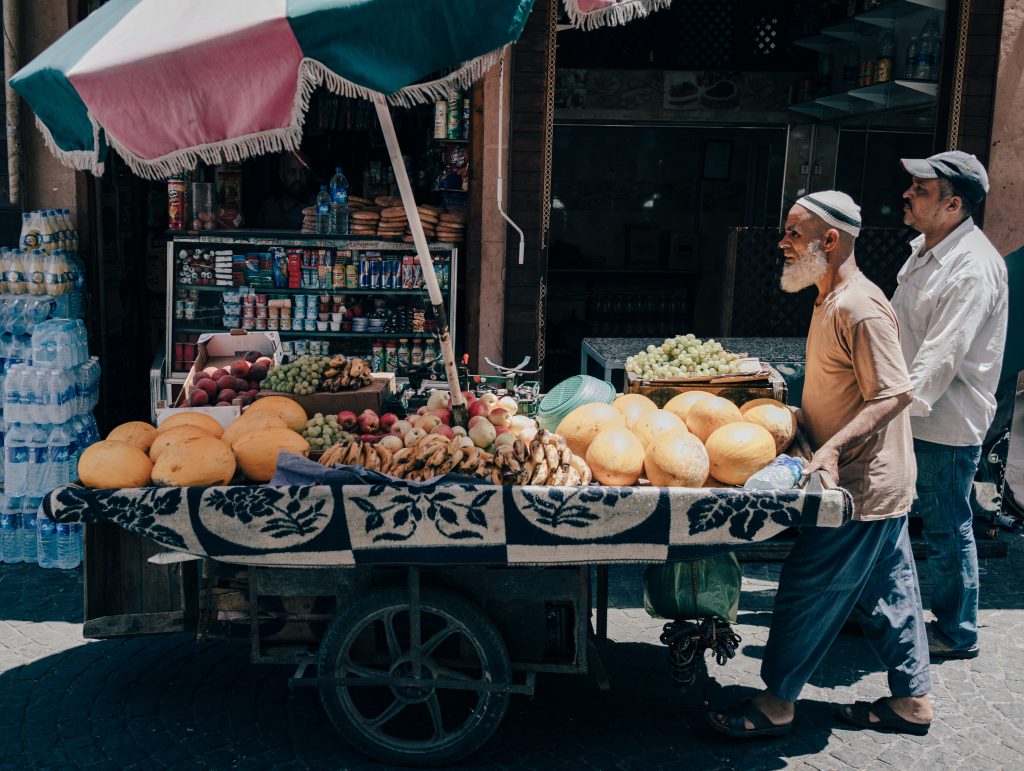
Nuts, an integral part of Moroccan snacks, come in a dazzling array. From the earthy richness of almonds to the buttery texture of cashews, each nut tells a story of Morocco’s fertile land.
If you have a sweet tooth, definitely give Chebakia a try. This delightful Moroccan pastry involves intricately shaping strips of dough into a floral pattern. After crisply frying it, the pastry receives a generous coating of honey, adding a sweet and fragrant touch. A sprinkle of sesame seeds adorns it, creating an irresistible blend of chewiness and crunch.
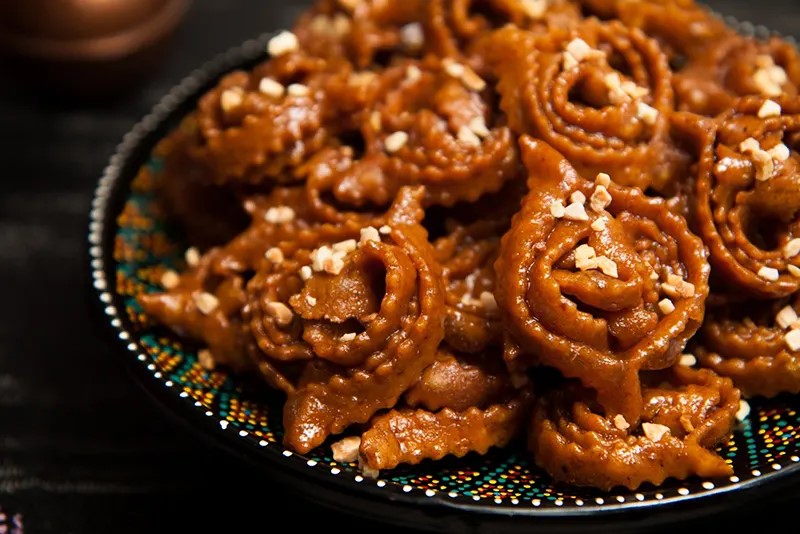
Spice Symphony
And then there are the spices – an orchestra of flavors. Cumin, coriander, cinnamon, and saffron dance in harmony, elevating every dish to a symphony of taste. Amid this spice-infused tapestry, certain dishes stand out. One of them is Ras el Hanout, a spice blend that may contain over 20 ingredients, or the iconic Chermoula, where coriander, cumin, and garlic intertwine, creating a vibrant marinade for fish or meat. These spice-laden creations not only tantalize the taste buds but also embody the rich culinary heritage and aromatic allure that define Moroccan cuisine. Moreover, they serve as a delectable tribute to the flavors and traditions deeply rooted in the country’s gastronomic history.


